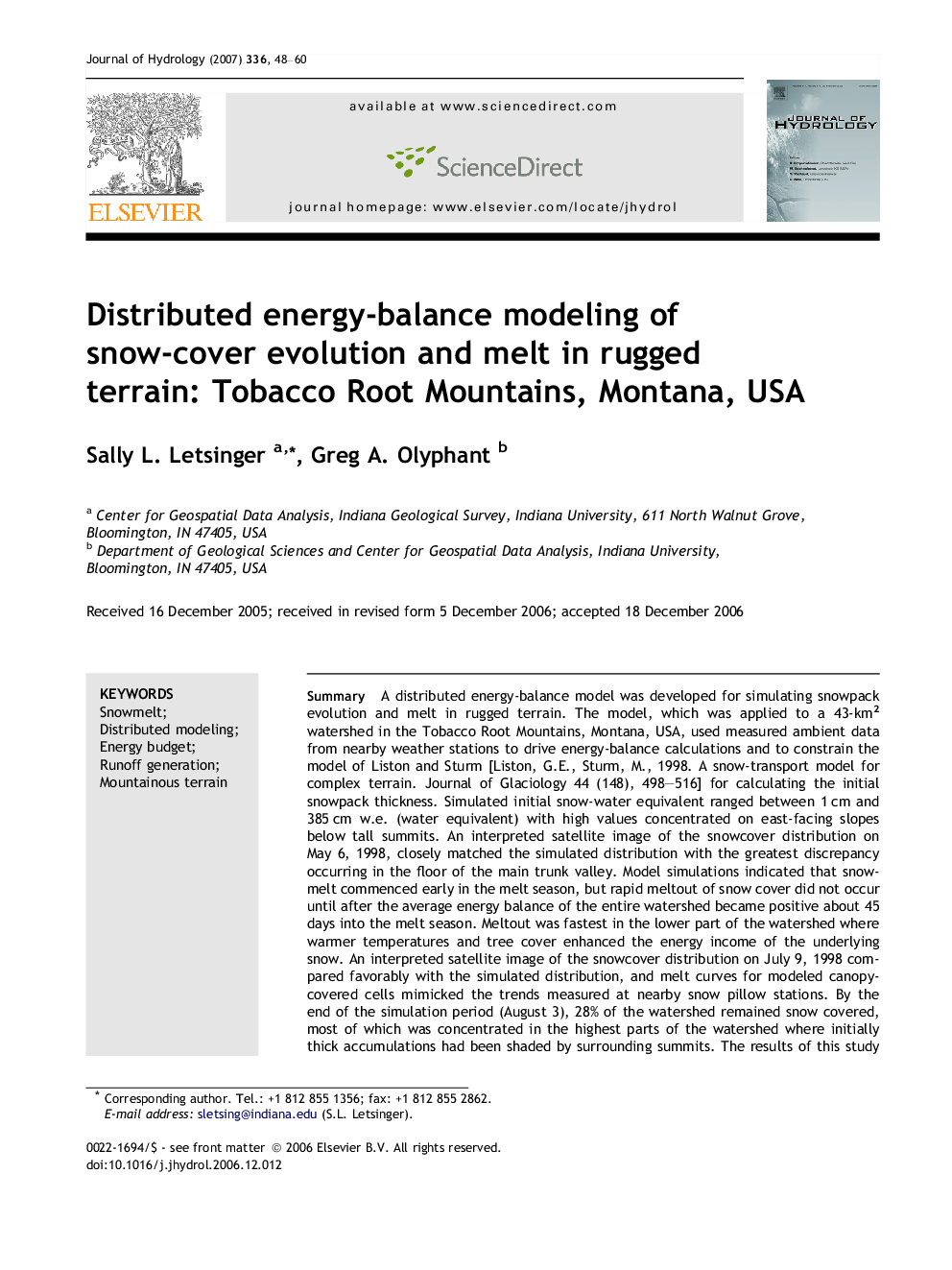| کد مقاله | کد نشریه | سال انتشار | مقاله انگلیسی | نسخه تمام متن |
|---|---|---|---|---|
| 4579820 | 1630144 | 2007 | 13 صفحه PDF | دانلود رایگان |

SummaryA distributed energy-balance model was developed for simulating snowpack evolution and melt in rugged terrain. The model, which was applied to a 43-km2 watershed in the Tobacco Root Mountains, Montana, USA, used measured ambient data from nearby weather stations to drive energy-balance calculations and to constrain the model of Liston and Sturm [Liston, G.E., Sturm, M., 1998. A snow-transport model for complex terrain. Journal of Glaciology 44 (148), 498–516] for calculating the initial snowpack thickness. Simulated initial snow-water equivalent ranged between 1 cm and 385 cm w.e. (water equivalent) with high values concentrated on east-facing slopes below tall summits. An interpreted satellite image of the snowcover distribution on May 6, 1998, closely matched the simulated distribution with the greatest discrepancy occurring in the floor of the main trunk valley. Model simulations indicated that snowmelt commenced early in the melt season, but rapid meltout of snow cover did not occur until after the average energy balance of the entire watershed became positive about 45 days into the melt season. Meltout was fastest in the lower part of the watershed where warmer temperatures and tree cover enhanced the energy income of the underlying snow. An interpreted satellite image of the snowcover distribution on July 9, 1998 compared favorably with the simulated distribution, and melt curves for modeled canopy-covered cells mimicked the trends measured at nearby snow pillow stations. By the end of the simulation period (August 3), 28% of the watershed remained snow covered, most of which was concentrated in the highest parts of the watershed where initially thick accumulations had been shaded by surrounding summits. The results of this study provide further demonstration of the critical role that topography plays in the timing and magnitude of snowmelt from high mountain watersheds.
Journal: Journal of Hydrology - Volume 336, Issues 1–2, 30 March 2007, Pages 48–60